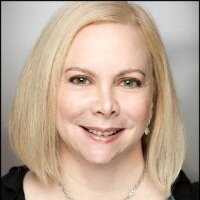Eruvin 56
“One generation passes away and another generation comes; but the earth abides forever.”
The discussion on taking measure of a city’s boundaries for purposes of abiding by Shabbat limits continues today and the text becomes a lesson in both geometry and astrology. The diagrams in the Koren Talmud that explain how to “square a city” through adding space to its rounded corners brings me back to the frightening days when I struggled through High School geometry with a protractor by my side which I would use to poke holes into my dog-eared homework assignment. I had memorized Shakespeare’s sonnets but when it came to geometry problems I was lost.
Measuring the limits of a city was as much of a challenge during the time of the Talmud as it is today, when official boundaries may be fixed, but city populations push out to suburbs and exurbs. The surveyors during the time of the Talmud did not have access to google maps or views from the air. They wanted to allow for a few extra cubits at the edge of the city. They created an approach that would draw an imaginary square around the dimensions of a city so that the square would be aligned with the north and side edges of the world. They had a sense of the position of the planets and aligned the north edge of the square with Ursa Major and the south side with Scorpio.
Rabbi Yosei introduced a method that “squares” a city based on the seasons. During the summer solstice and the longest day of the year (when I try to remember to read A Midsummer Night’s Dream), the sun rises in the northeast and sets in the northwest, which allows the square measure to be aligned as it travels “from east to west across the north side of the world.” The sun travels a southern route during the winter solstice and the shortest day of the year.
A counter argument is made to Rabbi Yosei’s theory, which states that “there is no validity to these rules” because one can only truly establish direction of the sun’s path during the autumn and spring. A quick check of Stanford University’s solar center website (http://solar-center.stanford.edu/AO/sunrise.html) confirms that this challenge is in fact correct. The website states that there are only two days when the sun is truly predictable and as we all learned, rises due east and sets due west, and that is during the spring and fall equinox.
Today’s Daf Yomi is a reminder that the sun and earth “abide forever” while “one generation passes away and another generation comes.” But there is less predictability of what to expect each year as the seasons turn from one to another. Climate change has resulted in summer days that are longer and hotter with a sun that is more brutal than ever, and winter snow days that in the U.S. Northeast are less common than in the past. There have been 70-degree days in December in New York City in recent memory. Weather extremes, including superstorms, west coast fires, floods, and even the occasional polar vortex, appear more common than ever before and once in a generation events are occurring on an annual basis.
I am convinced that the spread of the coronavirus is the consequence of climate change. Wildlife that we were never exposed to before are being driven into our habitats as a result of deforestation and spreading animal-to-human diseases. Air pollution and crowded human conditions result in poor survival outcomes from COVID-19. The confluence of coping with extreme natural events, like fires, hurricanes and floods, during a time of a pandemic further stresses the response to each tragedy.
The celebration of Sukkot and the fall harvest and the riches we receive from the earth, should be a reminder of the deep wound in mother nature that our generation has created. The earth will truly abide forever and long after we are gone, but if we don’t put all our resources behind reversing the damage we have done so far, the legacy we leave to future generations will be one of ruin and devastation. And my generation was the one that celebrated the first Earth Day and studied the Whole Earth Catalog as if it were our bible. How did we go so astray?
